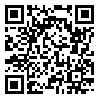1. Winter, D. (1930). Biomechanics and Motor Control of Human Movment. United states of Amrica, 3 : 1-9.
2. Van Den Tillar, R., Ettema, G. (2004). Effect of body size and genter in overarm throwing performance. Eur J Appl Physiology. 91: 413-18.
3. Hong, D.A., Cheung, T.K., Roberts, E.M. ( 2001). A three-dimensional, sixsegmentchain analysis of forceful overarm throwing. Electromyography and Kinesiology. 11: 95-112.
4. Sakurai, M., Miyashita, M. ( 1983). Development aspects of overarm throwing related to age and sex. Human Movment Scince. 2: 67-76.
5. Pawels, J. (1976). The relationship between somatic development and motor ability, and throwing velocity in handball for secondary school students. Biomechanics of Sports and Kinanthropometry. Universityof Leuven, Symposia Specialist Inc. 357-69
6. Zapartidis, D., Skoufas, I., Vareltzis, T., Christodoulidis, T., Kororos, P. (2009). Factors influencing ball throwing velocity in young female handball players. The Open Sports Med. 3: 39-43.
7. Wagner, H., Fusterschmied, J., Klous, M., Duvillard Serge, P., Muller, E. (2012). Movement variability and skill level of various throwing techniques. Human Movment Scince. 31: 78–90.
8. Van Den Tillaar, R., Cabri, J. (2012). Gender differences in the kinematics and ball velocity of overarm throwing in elite team handball players. Journal of Sports Sciences. 30(8): 807–13.
9. Williams, K. (2004). Recreation & Dance. Physical Education. 75: 6.
10. DiGiovine, N.M., Jobe, F.W., Pink, M. (1992). EMG of upper extremity in pitching. Shoulder Elbow Surgery. 1: 15-25.
11. Kelly, BT., Backus, SI., Warren, RF., et al. ( 2002). Electromyographic analysis and phase definition of the overhead football throw. Amrican Journal Sports Medicine. 30(6): 837-44.
12. Maffet, MW,. Jobe, FW,. Pink, MM,. et al. (1997). Shoulder muscle firing patterns during the windmill softball pitch. Amrican Journal Sports Medicine. 25(3): 369-74.
13. Rokito, AS., Jobe, F.W., Pink, M.M., et al. (1998). Electromyographic analysis of shoulder function during the volleyball serve and spike. Journal Shoulder Elbow Surgery. 7(3): 256-63.
14. Chow, JW., Carlton, L.G., Lim, Y.T,. et al. (1999). Muscle activation during the tennis volley. Medicine Science Sports Exercise. 31(6): 846-54.
15. Pink, M., Jobe, F.W., Perry, J. (1990). Electromyographic analysis of the shoulder during the golf swing. American Journal Sports Medicine. 18 (2): 137-40.
16. Watking, R., Uppal, G., Perry, J., Pink, M., Dinsay, J. (1996). Dynamic Electromyographic analysis of trunk musculature in professional golfers. American Orthopaedic Sports Medicine. 24: 534.
17. Konrad, P. (2005). The ABC of EMG (A Practical Introductionto Kinesiological Electromyography) . Noraxon INC. USA.
18. Wagner, H., Pfusterschmied, J., von Duvillard, S.P., Muller, M. (2011). Performance and kinematics of various throwing techniques in team-handball. Journal of Sports Science and Medicine. 10(1): 73-80.
19. Illyes, A., Kiss, R. (2005). Shoulder muscle activity during pushing, pulling, elevation and overhead throw. Electromyog nd Kinesiology. 15 :282–9.
20. Fradet, L,. Kulpa, R., Multon, F., Delamarche, P. (2002). Kinematic analysis of handball trowing. ISBS.
21. Garcia, J., Grande, I., Sampedro, J., Van den Tillaar, R. (2011). Influence of opposition on ball velocity in the handball jump throw. Sports Science nd Medicine. 10: 534-9.
22. Illyes, A., Kiss, R. (2003). Comparative EMG analysis of the shoulder between recreational athletes and javelin. throwers during elementary arm motions and during pitching. Physical Education and Sport. 1: 43- 53.
23. Srhoj, V., Rogulj, N., Papi, V., Foreti, N., Avala, M. (2012). The influence of anthropological features on ball flight speed in handball. Coll Antropol. 36 : 967–972.
24. Wagner, H,. Buchecker, M,. Serge, P,. Duvillard, V,. Muller, E. (2010). Kinematic description of elite vs. low level players in team-handball jump throw. Sports Science nd Mededicine. 9: 15-23.
25. Rivilla-Garcia, J,. Grande, I,. Sampedro, J,. Van den Tillaar, R. (2011). Influence of opposition on ball velocity in the handball jump throw. Sports Science nd Medicine. 10: 534-539.
26. Lopez, CM,. Platen, P. (2005). Motion analysis in handball. Proceedings of the 4th International Symposium on Image and Signal Processing and Analysis.1: 345.
27. De Luca, C J. (2002). Surface electromyography. detection & recording. DelSys Incorporated.
28. De Luca, C J. (1997). The use of surface electromyography in biomechanics. Applied Biomech. 13 (2) : 135-163.
29. Cooke, JD,. Brown, S,. Forget, R. et al. (1985). Initial agonist burst duration changes with movement amplitude in a deafferented patient. Experiment Brain Reserch. 60 :184–87 .
30. Mills, KR., Kimiskidis, V. (1996). Motor cortex excitabili¬ty during ballistic forearm and finger movements. Muscle Nerve. 19: 468–73.
31. Sakurai, S., Ohtsuki, T. (2010). Muscle activity and accuracy of performance of the smash stroke in badminton with reference to skill and practice. Sports Science. 18(11): 901-14.
32. Sanes, J.N., Mauritz, K.H., Dalakas, M.C., et al. (1985). Motor control in humans with large-fiber sensory neurop¬athy. Human Neurobiol. 4 :101–14.
33. Gottlieb, G.L., Corcos, D.M., Agarwal, G.C. (1989). Organizing principles for single-joint movements, A speed-in¬sensitive strategy. Journal of Neurophysiology. 62 :342–57.
34. Yotani, K., Tamaki, H., Kirimoto, H., Yuki, A.S., Kitada, K., Maesaka, S., Ogita, S. (2013). Response time and muscle activation patterns of the upper limbs during different strikes in kendo. Scince of matial arts. 9(2): 101-107.








